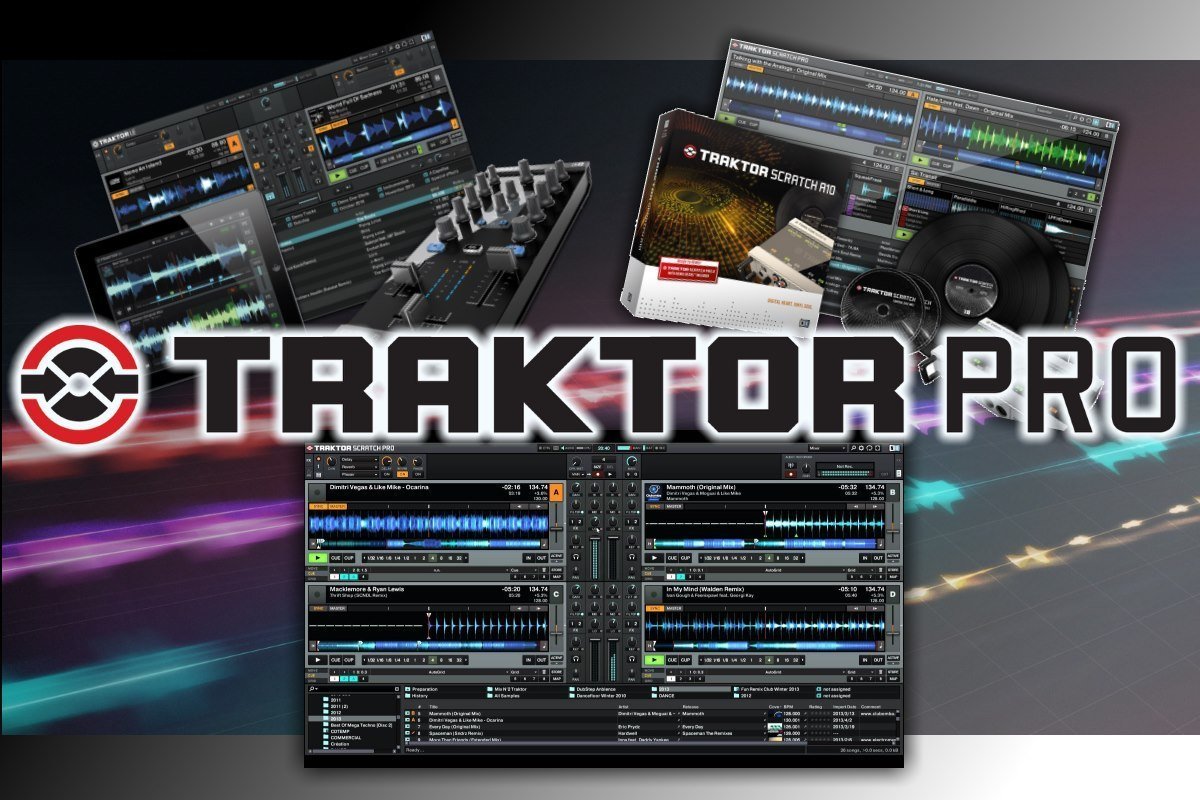
It's certainly beyond the scope of timecoder.c and would need its ownĪnd in all probability, a much less robust timecode (with respect toīitstream) because of the above, as well as a fiddly implmentation. The signal is 'bent' back into being aligned at zero every time it changes High-pass filtering of the stylus defeats it. Timecode is no longer balanced in the + and - direction, even the Most things like this will generalise to an LFSR like before.ĭecoding the wave would involve tracking the offset. I didn't do anything to decode the bitstream, but The 2.4KHz of the sine wave is not matched by the bistream which only runsĪt 1.2KHz, it seems. The result is two circles in an X-Y scope eg. It's different to existing timecodes: instead of modulating the amplitude, Here is what Mark Hills, the xwax author, has said about the new format: I am playing in the traktor_b section and changing the resoultion to 2500 seems to set the speed of the vinyl in the right way (so i figured out that could be the kHz setting of 2,5). flags = SWITCH_PRIMARY | SWITCH_POLARITY | SWITCH_PHASE,
#TRAKTOR SCRATCH 2.5 CODE#
I figured out that in the source code the file "timecoder.c" is the responsible to make the time code profiles. I don't understand ANYTHING about harmonics and related stuff but i am a little bit able with coding: Hi, i own an MK2 with a Traktor Audio 6 and recently switch to linux with realtime kernel for trying xwax. Probably the digital modulation is much weaker than the carrier and it's not picked up by the iSpectrum.
#TRAKTOR SCRATCH 2.5 SOFTWARE#
You should try to use some better software to analyze the signal or even better a lab instrument, a true spectrum analyzer. I can't see anything else, but I definitely hear digital noise superimposed on the carrier with my "naked" ear. The frequency moves around 2.5 kHz up and down in a sinusoidal fashion. I played the record into a software spectrum analyzer (iSpectrum) and I can see only a strong carrier signal at around 2.5 kHz (plus harmonics at 5 and 7.5 kHz). Unfortunately on my record on side A there is a long radial scratch, but it has no influence, Traktor works properly even though the record is heavily scratched, if you find something strange happening 33 times a minute in the signal then probably it's the scratch, tho the timecode software is insensitive to that. On side B you can hear a click and see it quite clearly on the waveform when the infinite groove starts.

At the end of the record there is an infinite loop track, the pickup will not move further towards the center and your track will keep on playing even if you forget to touch the record. The lead in area where traktor rewinds to the start of the tracks is the few first grooves, approximately 3 to 5 seconds. If the option is activated in traktor one can scroll thru the playlist by manually spinning the record and stopping on the track that one wants to be loaded in the deck.forget about it, it's kind of a useless feature: when the pickup is in that area it's too close to the hand anyway and it will be hit and displaced by the hand while trying to spin the record. The last minute (approximately) is the track selection area. Larger jog wheels would let us perform scratches more naturally, but you do soon get used to the size and you can always attach a regular turntable or CDJ to the Kontrol S4 if you want to scratch on a larger platter.The two files are here com/filegroup/ ZUkFT%2F482HTxT Xvt3EBudg or better:Ī quick analisys: side B is about 3 minutes longer than side A. Our only criticism is the size of the jog wheels. You can also use the jog wheels to speed up and slow down tracks momentarily to synchronise them, and the very low latency and responsiveness helps here too. This responsiveness means you can perform your scratches and beatjuggles naturally without having to compensate for any latency. This means that the jog wheels control Traktor using a special protocol rather than the older MIDI protocol, so moving the jog wheel has a near-instantaneous effect on a track. Because NI manufactures the Traktor software as well as the Kontrol S4, the integration between both is extremely tight. Thankfully, the Kontrol S4’s jog wheels are excellent. Modern DJ controllers only need jog wheels to scratch, so if a controller has them they need to be good. There’s quite a bit of friction in comparison to scratch-oriented crossfaders such as Ecler’s Eternal crossfader or the DJM-T1’s crossfader, but we had no problems performing scratch techniques such as crabs and flares. The Kontrol S4’s crossfader is great for mixing or scratching.


 0 kommentar(er)
0 kommentar(er)
